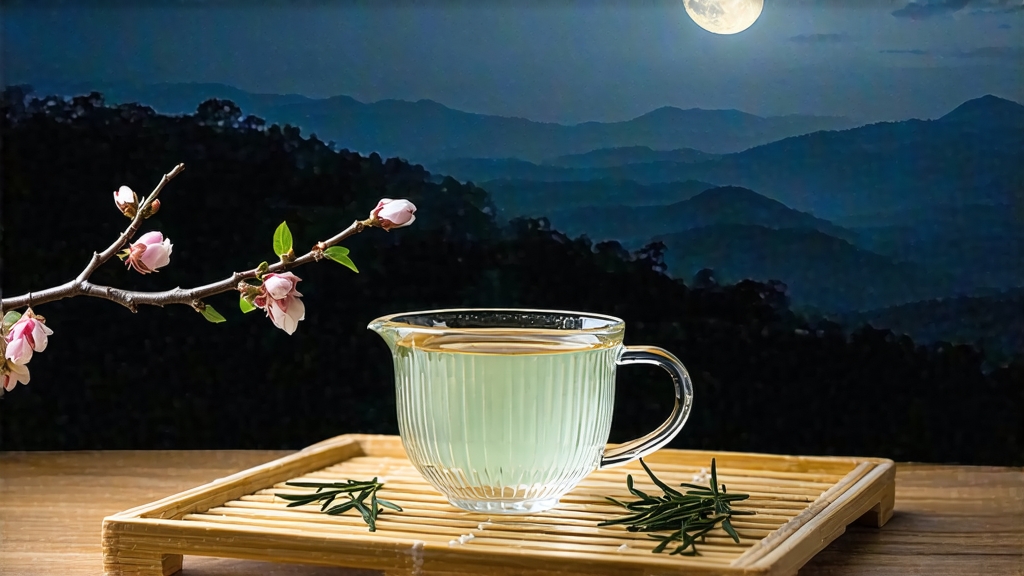
If green tea is the fresh-faced youth of Chinese tea and pu-erh the venerable elder, then white tea is the quiet poet who arrives late to the party, speaks softly, and leaves everyone haunted by the few words uttered. Among white teas, none is more elusive, more moon-kissed, than Bai Hao Yin Zhen—literally “White Hair Silver Needle.” To international drinkers accustomed to rolled oolongs or roasted blacks, Silver Needle can feel almost too subtle, like trying to read a love letter in the dark. Yet once the palate is tuned, the tea reveals a universe of aroma, history, and craft compressed into a single, downy bud.
-
A Leaf That Remembers Emperors
Legend places the birth of Silver Needle during the Song dynasty (960-1279), when a Fujian prefect offered “white buds” as tribute to Emperor Huizong. The imperial court prized the tea for its translucent liquor and the way the buds floated upright in the cup, resembling silver needles suspended in morning light. Commerce later carried the tea down the Min River to the port of Fuzhou, where European merchants in the 18th century nicknamed it “Pekoe Tips,” confusing the Chinese term bái háo (white down) with the old British grading word “pekoe.” By the late Qing, Silver Needle had become one of the most expensive teas per ounce on the London market, outselling even first-flush Darjeeling at auction. Today, it remains the priciest tier of white tea, not because of marketing hype but because one pound requires roughly thirty-eight thousand hand-picked buds. -
Geography of Mist and Red Soil
Authentic Silver Needle comes only from northern Fujian’s coastal hills—Fuding and Zhenghe counties—where subtropical humidity meets mineral-rich lateritic soil. The region’s signature morning fog slows photosynthesis, forcing the tea bush (usually the Fuding Da Bai cultivar) to stockpile amino acids, especially L-theanine, which translates into the tea’s hallmark sweet-broth umami. Farmers speak of “three clouds a day”: dawn mist, noon sea breeze, and evening mountain fog. These micro-climates create a diurnal temperature swing of up to 15 °C, thickening the bud’s cuticle and the silvery trichomes that protect it. -
The Art of Doing Almost Nothing
White tea’s minimalism is deceptive. There is no pan-firing, no rolling, no shaking; the leaf is coaxed rather than coerced. Picking begins at sunrise on clear days in mid-March, when the bud reaches 2.5–3 cm but has not yet unfurled into a leaf. Experienced pluckers use a diagonal snap that leaves the petiole clean, preventing oxidation browning. The buds are then spread on bamboo trays exactly one finger-width apart and wheeled into a sun-drying courtyard. For the next 48–60 hours they undergo natural withering under a choreography of shade and sun. The goal is to reduce moisture to 8–10 % without ever exceeding 35 °C, a window so narrow that farmers compare it to “walking a tightrope in socks.” Once the buds feel cool and leathery to the touch, they are given a final 20-minute bake at 45 °C to fix the aroma; any hotter and the down turns ochre, any cooler and the tea risks sour microbial notes during storage. -
Grades Within the Tip
International vendors often sell anything pale as “Silver Needle,” but Chinese connoisseurs recognize three ascending grades:- Tian Cha (Heaven Grade): buds harvested before Qingming festival, uniform 2.8 cm, 90 % unopened, possessing the highest density of white down.
- Cha Wang (King Grade): same early harvest but individually selected for perfect needle shape and absence of any purple bud, yielding a brighter liquor.
- Cun Cha (Village Grade): post-Qingming buds mixed with the occasional tiny leaf, still delicious but lighter in amino acids and less cellar-worthy.
A quick test is the “static cling”: rub a pinch between palms; premium grades release a soft cloud of down that hovers like pollen before settling.
- Brewing: Listening to Silence
Silver Needle is not a tea that shouts; it whispers, and the water must be taught to listen. Start with a tall, thin-walled glass gaiwan (120 ml) so the buds can be observed dancing